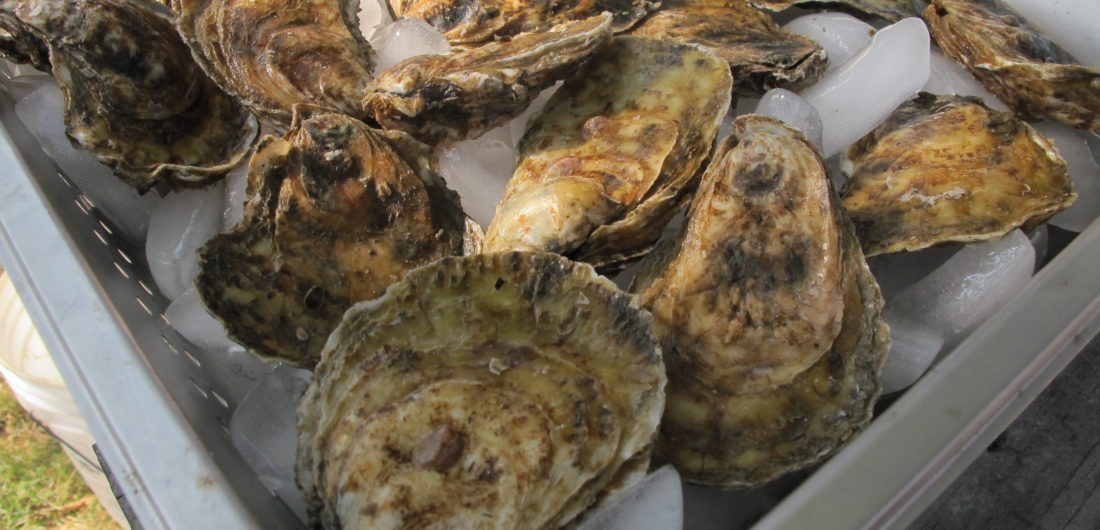After you purchase oysters, make sure the bag is not tightly sealed because they need air circulation. Keep the oysters cold as you transport them, either with gel packs or ice, but strive to get them to a refrigerator as soon as possible. You should place the oysters in the coldest part of your refrigerator, near the back, and keep them in a metal bowl or open container. Cover the top of the oysters with a damp kitchen towel, and wet the towel periodically as it dries out. If you have a colander or perforated pan, you can store the oysters on ice. Otherwise, if you don’t have drainage, it’s best not to store the oysters on ice because the ice will melt, and being submerged in fresh water will affect the flavor of the oysters and eventually kill them.
When you’re ready to shuck and eat the oysters, put them in a colander and give them a good rinse in cold water. This helps make sure that any mud and loose bits of shell get washed off, and don’t get carried into the oyster meat as you shuck.
The same rules apply to clams and mussels, with the addition that beards on mussels should be removed right before they’re cooked, because keeping them on extends the shelf life of the mussels.
In proper storage conditions, oysters can survive 2 to 3 weeks outside of the water, clams up to 5-6 days, and mussels up to 2-3 days, but we strongly recommend eating them as soon as possible.
